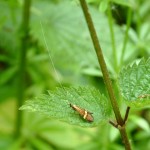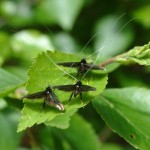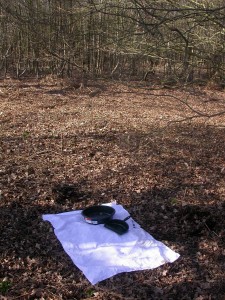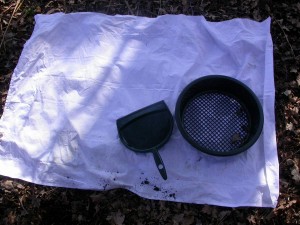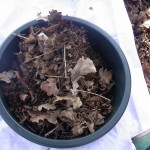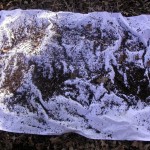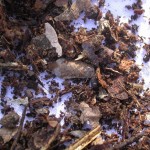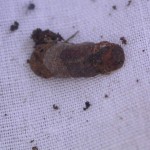This is a technique for finding the larval cases of some of our longhorn moths that I was shown by Ian Sims at a British Entomological and Natural History Society meeting last autumn. Some of the longhorn moths will be quite familiar – the swarms of Adela reaumurella that fly on sunny spring days are a common sight around the county and Nemophora degeerella is also relatively common although more usually encountered in ones or twos.
|
|
The larvae of these and related species feed as larvae in amongst the leaf-litter, forming neat cases from fragments of dead leaves. They occur as larvae generally from summer through to spring of the following year and the cases are probably best searched for in late winter and early spring when they are larger and easier to spot.
Searching for these larval cases is quite simple and involves the minimum of equipment, which is a white sheet, say 4′ x 3′ in size, a garden sieve, a plastic brushpan and some pots.
|
|
Once you have your equipment find a patch under some trees/shrubs that has a good amount of leaf-litter. Spread the sheet out on the ground, put the sieve on it and then use the brushpan to scoop up some leaf-litter. Then gently shake the sieve over the sheet, spreading the sievings out over the entire sheet. Then it’s a matter of looking closely and trying to spot some of the larval cases.
|
|
Once you have found some cases you can pop them in a pot with some of the leaf litter or put all the sievings into a larger pot. Keep in an airy container with occasional sprays of water to dampen things down a bit if they get dry. Then it’s wait and see what hatches out in spring and early summer.
Although, its getting a little late for this technique this year you may still have some luck. However, it may be of more interest during winter-time when there isn’t so much in the way of field work to be done.
Tony

